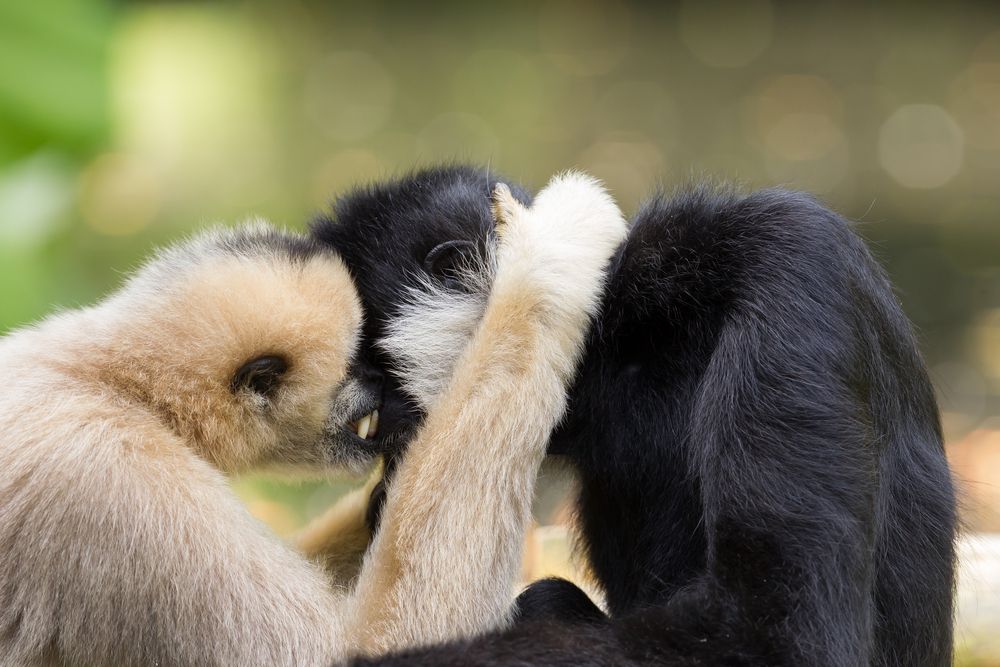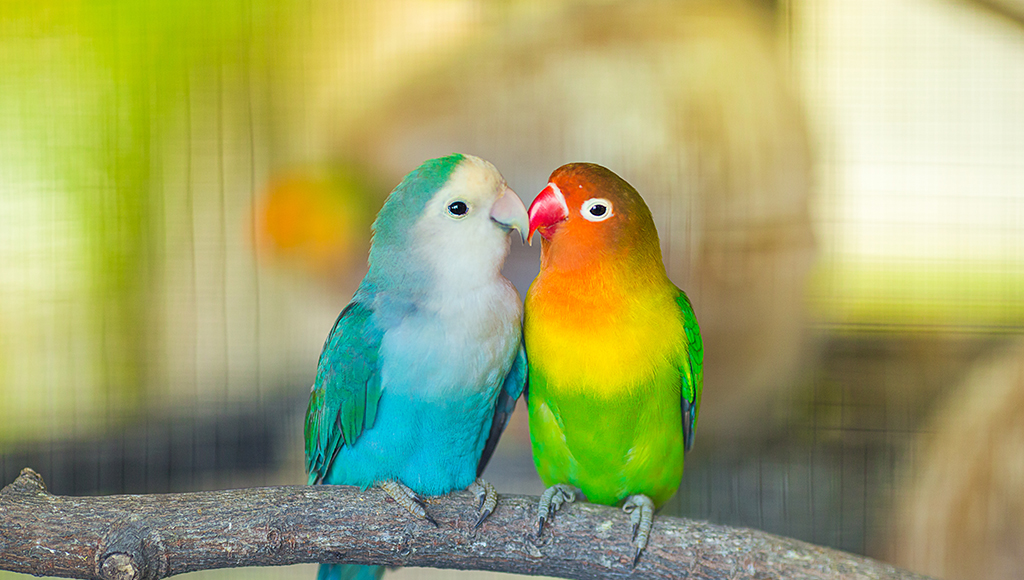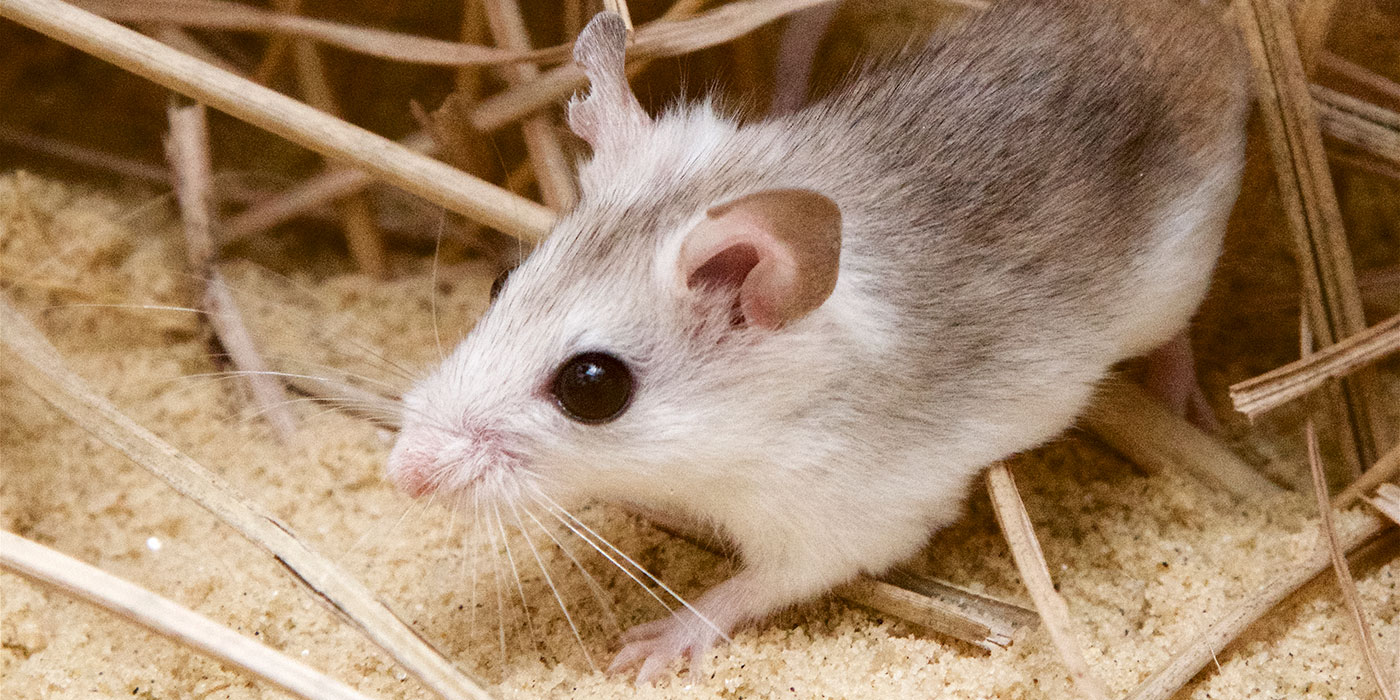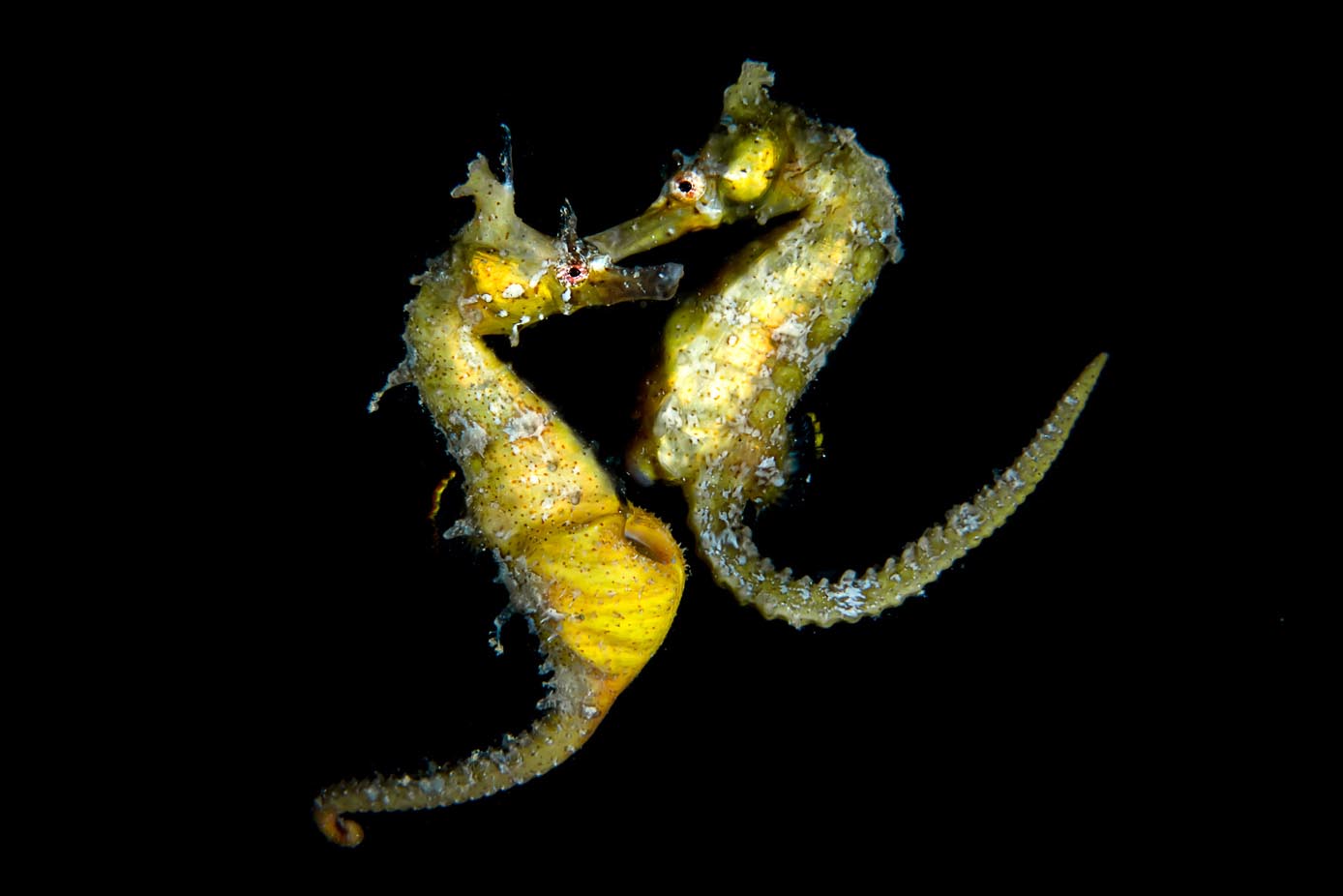In the animal kingdom, lifelong monogamous relationships are a rarity. While humans often seek out their one true love, only a small percentage of animals exhibit this type of bonding. These unique creatures form strong pair bonds, remaining faithful to their partners throughout their lives.

The World’s Top 10 Animals That Mate For Life
Lovebirds

Lovebirds are a small group of parrots in the Old World parrot family Psittaculidae, with all nine species native to the African continent, including the grey-headed lovebird from the African island of Madagascar.
They are known for their beautiful colors, intelligence, and seemingly affectionate behavior towards their mates. The name “lovebird” comes from their strong pair bonds, as the Greek word “agape” means “love” and “ornis” means “bird”.
These birds are among the smallest parrot species, with an average length of 5 to 7 inches when measured from the beak to the end of the tail feathers.
The most popular lovebird species is the peach-faced lovebird, which can be identified by the rainbow of yellow, green, and blue on their bodies and their bright peachy-pink faces. Lovebirds have a short, blunt tail, unlike budgies (parakeets), which have long, pointed tails.
In the wild, lovebirds are native to the forests and savannas of Sub-Saharan Africa and Madagascar. However, feral populations can be found in the American Southwest, San Francisco, and various cities in Africa, where they may have escaped from captivity or been released.
As pets, lovebirds are popular due to their small size, beautiful colors, and affectionate nature. They are friendly, have great personalities, and enjoy close contact with people.
Oldfield Mice

Oldfield mice are a species of deer mouse that are known for their monogamous relationships and strong pair bonds. They are primarily found in early successional habitats such as abandoned fields, beach dunes, and scrub habitats.
Oldfield mice dig underground nest cavities, which lie 0.3 to 0.9 meters below the surface, and construct and use extensive burrows. They are primarily nocturnal and are most likely restricted to sandy and loamy soils throughout their range because of their reliance on tunneling.
Oldfield mice are excellent models for genetic research and have been used extensively in laboratory studies. In a common laboratory setting, researchers monitored parental behaviors of males and females of two promiscuous and two monogamous species of deer mice, including oldfield mice, from before mating to after giving birth.
The study found that oldfield mice showed relatively high levels of parental care at all reproductive states, especially by females, uncovering high levels of pre-mating alloparental care that were not known in this species. This suggests that oldfield mice are cooperative breeders in the wild, where subadults often remain in their natal burrow alongside their parents and the subsequent litter.
Atlantic Puffins
Atlantic puffins are a species of seabird that are known for their distinctive appearance and behavior. Here are some interesting facts about Atlantic puffins and their mating habits:
– Appearance: Atlantic puffins are medium-sized seabirds with black and white feathers, a colorful beak, and orange webbed feet. During the breeding season, their beaks become more brightly colored, with a gaudy black, orange, and yellow bill.
– Diet: Atlantic puffins eat small fish, mainly sandlance, sprat, capelin, herring, hake, and cod.
– Breeding habits: Atlantic puffins nest in large colonies, using the same sites year after year. During the breeding season, they perform a courtship dance that involves beak-rubbing and head-flicking to attract a mate. Once paired, they maintain their bond by returning to the same breeding colony each year, and often even to the same burrow.
– Behavior: Atlantic puffins are social birds and interact regularly through many behaviors. They are often attracted to decoys and other social birds.
Atlantic puffins are fascinating creatures that play an important role in their ecosystems. Their unique appearance and behavior make them a popular subject for birdwatchers and nature enthusiasts.
Coyotes
Coyotes are a species of canid that are found throughout North America. Here are some interesting facts about coyotes and their mating habits:
– Habitat: Coyotes are highly adaptable and can be found in many different types of ecosystems, including forests, grasslands, deserts, and urban areas.
– Diet: Coyotes are opportunistic feeders and will eat a wide variety of foods, including small mammals, birds, reptiles, and insects.
Read more : Discover the Top 3 Most Dangerous Flying Animals in Texas
– Breeding habits: Coyotes are monogamous and will mate for life. They typically mate in February, and the alpha pair in a pack will be the only ones to mate. Once paired, they maintain their bond through long-term pair bonding, meaning they stay with the same mate for more than one breeding season. Eastern coyotes mate for life when left to thrive, and yearlings may take over a territory if the adult mated pair is killed or dies.
– Behavior: Coyotes are social animals and often live in packs, although they can also be solitary. They use a variety of vocalizations to communicate with each other, including howls, barks, and yips.
Coyotes are fascinating animals that play an important role in their ecosystems. Their adaptability and intelligence have allowed them to thrive in many different environments, including urban areas.
Seahorses

Seahorses are fascinating creatures known for their unique appearance and behavior. Here are some interesting facts about seahorses and their mating habits:
– Appearance: Seahorses are small fish that come in various sizes and colors, with a distinctive horse-like head and a curled tail. They have a prehensile tail that allows them to anchor themselves to objects like blades of sea grass.
– Monogamous Mating: Seahorses are monogamous and mate for life, forming strong pair bonds with their partners. They engage in a daily courtship dance, during which they may circle each other, change color, and even hold tails. This dance helps the pair reinforce their bond and assess each other’s reproductive status.
– Male Pregnancy: One of the most remarkable aspects of seahorse reproduction is their unique male pregnancy. After the female transfers her eggs to the male’s brood pouch, the male fertilizes the eggs and carries them for about 24 days, providing all the nutrients and oxygen they need to grow. Once the eggs are fully developed, the male gives birth to self-sufficient offspring.
– Importance of Habitat: Seahorses are often found in seagrass beds and coral reefs, where they can anchor themselves to the vegetation and blend in with their surroundings. These habitats provide the necessary food and shelter for seahorses to thrive.
Seahorses’ mating rituals and reproductive strategies are not only fascinating but also essential for their survival as a species. Understanding and protecting their unique habitats is crucial for the conservation of these enchanting creatures.
Dik-diks
Dik-diks are small antelopes found in Africa that are known for their monogamous relationships and strong pair bonds. Here are some interesting facts about dik-diks and their mating habits:
– Appearance: Dik-diks are small, slender antelopes that stand only about 12-16 inches tall at the shoulder. They have a reddish-brown coat, large eyes, and a distinctive tuft of hair on their forehead.
– Habitat: Dik-diks are found in a variety of habitats, including savannas, woodlands, and bushlands. They are well adapted to living in arid environments and can go without water for long periods of time.
– Monogamous Mating: Dik-diks form permanently mated pairs that occupy the same territory for life. Males and females are sexually mature at different ages, with females reaching maturity at 6 months and males at 12 months. Breeding can take place twice per year, and females give birth to one calf after a gestation period of 5-6 months. Most births occur between November and December and April through May.
– Behavior: Dik-diks are social creatures and live in pairs. Males are the main defenders of territories, as females are unable to maintain territories themselves. Both the male and female mark their territory with secretions from preorbital scent glands that are located beneath their eyes and with dung deposits. Dik-diks are herbivorous animals that mainly eat foliage, fruits, shoots, and berries.
Dik-diks are fascinating animals that play an important role in their ecosystems. Their monogamous relationships and strong pair bonds are essential for successful reproduction and the survival of their species.
Bald Eagles
Bald eagles are a species of bird of prey that are known for their majestic appearance and behavior. Here are some interesting facts about bald eagles and their mating habits:
– Appearance: Bald eagles are large birds of prey that can grow up to 3 feet tall and have a wingspan of up to 7 feet. They have a distinctive white head and tail, with a dark brown body.
– Habitat: Bald eagles are found throughout North America, from Alaska to Florida. They prefer to live near water, such as lakes, rivers, and coastlines, where they can easily find fish to eat.
– Monogamous Mating: Bald eagles are generally monogamous and mate for life, with bonded pairs often returning year after year to the same nest. They typically lay 1-3 eggs per year, and both parents take turns incubating the eggs and caring for the young. If one mate dies, the surviving mate may find a new partner.
– Behavior: Bald eagles are territorial birds and will defend their nests and hunting areas from other eagles and predators. They are also known for their impressive hunting skills, using their sharp talons to catch fish and other prey.
Bald eagles are a symbol of strength and courage and play an important role in their ecosystems. Their monogamous relationships and strong pair bonds are essential for successful reproduction and the survival of their species.
Albatrosses
Albatrosses are a group of seabirds known for their impressive wingspans and long lifespans. Here are some interesting facts about albatrosses and their mating habits:
Read more : Discover 13 Animals Roaming Atop Missouris Tallest Mountain
– Appearance: Albatrosses are large seabirds with wingspans that can reach up to 11 feet. They have long, narrow wings that allow them to soar effortlessly over the ocean for hours at a time.
– Habitat: Albatrosses are found in the Southern Ocean and the North Pacific Ocean. They spend most of their lives at sea, only coming to land to breed and raise their young.
– Monogamous Mating: Most albatross species mate for life, forming strong pair bonds that can last for decades. During the breeding season, males and females engage in elaborate courtship displays that involve dancing, bill clacking, and other behaviors. Once paired, they return to the same breeding colony each year to mate and raise their young.
– Behavior: Albatrosses are highly social birds and often form large colonies on remote islands. They are also known for their impressive flying abilities, with some species able to travel thousands of miles in a single flight.
While albatrosses are known for their monogamous relationships, climate change has been shown to impact their mating habits. Rising sea temperatures have led to changes in the distribution of their prey, causing some pairs to separate and seek out new mates. Despite these challenges, albatrosses remain an important and fascinating part of the ocean ecosystem.
Beavers

Beavers are a species of rodent that are known for their impressive dam-building skills and their monogamous relationships. Here are some interesting facts about beavers and their mating habits:
– Appearance: Beavers are large rodents that can grow up to 3 feet long and weigh up to 70 pounds. They have brown fur, webbed hind feet, and a flat, paddle-like tail that they use to swim.
– Habitat: Beavers are found throughout North America, living in freshwater habitats such as rivers, streams, and ponds. They are well adapted to aquatic environments and can hold their breath for up to 15 minutes.
– Monogamous Mating: Beavers are one of the few mammal species that mate for life. They typically mate at around 3 years of age and stay with the same mate for the rest of their lives. Both parents take care of their offspring, and yearlings often help care for the kits. If one mate dies, the surviving beaver may seek out a new mate.
– Behavior: Beavers are known for their impressive dam-building skills, which they use to create ponds and wetlands that provide habitat for many other species. They are also herbivorous animals that mainly eat bark, leaves, and twigs.
Beavers are fascinating animals that play an important role in their ecosystems. Their monogamous relationships and impressive engineering skills are essential for the survival of their species and the many other species that depend on their habitat.
Gibbons
Gibbons are a group of small apes found in Southeast Asia, known for their agile movements and melodic singing. While they were once believed to be monogamous, recent research has shown that their mating patterns are more complex. Here are some interesting facts about gibbons and their mating habits:
– Appearance: Gibbons are small apes with long arms and a slender body. They have no tail and are covered in dense fur, which can range in color from black to light brown.
– Habitat: Gibbons are arboreal animals, meaning they spend most of their lives in trees. They are found in the tropical rainforests of Southeast Asia, including Indonesia, Thailand, and Malaysia.
– Mating Patterns: While gibbons were once thought to be strictly monogamous, research has shown that their mating patterns can vary. In some cases, they form monogamous pairs, with a male and female staying together for several years and raising their offspring. However, in other cases, groups of gibbons may contain two adult males and one female, or one adult male and two females. This suggests that gibbons may engage in both monogamous and polygamous relationships, depending on the social dynamics of their group.
– Behavior: Gibbons are highly vocal animals and are known for their melodic singing, which they use to communicate with other members of their group and establish their territory. They are also agile climbers and can move quickly through the treetops, using their long arms to swing from branch to branch.
While gibbons may not always mate for life, they still form strong social bonds within their groups. Their complex mating patterns and unique behaviors make them fascinating creatures to study and observe in the wild.
FAQS
1. What does it mean for an animal to mate for life?
Mating for life means that an animal forms a long-term, monogamous relationship with a single partner, often staying together for many years or even for life.
2. Why do some animals mate for life?
There are many reasons why animals may mate for life, including the need for a stable partner to help raise offspring, the benefits of sharing resources and territory, and the advantages of having a reliable mate for protection and support.
3. What are some of the top animals that mate for life?
Some of the top animals that mate for life include beavers, wolves, gibbons, bald eagles, albatrosses, seahorses, and lovebirds.
4. Are all animals that mate for life strictly monogamous?
No, not all animals that mate for life are strictly monogamous. Some species may engage in polygamous relationships or may occasionally mate with other partners outside of their primary relationship.
5. How do animals that mate for life maintain their relationships?
Animals that mate for life maintain their relationships through a variety of behaviors, including courtship displays, mutual grooming, and shared parenting responsibilities. They may also return to the same breeding sites or territories year after year to reinforce their bond.
6. Why is it important to study animals that mate for life?
Studying animals that mate for life can provide insights into the evolution of social behavior, the importance of long-term relationships in animal societies, and the ways in which animals adapt to changing environmental conditions. It can also help us better understand and protect these fascinating creatures and their habitats.
Source: https://petstutorial.com
Category: Animals










